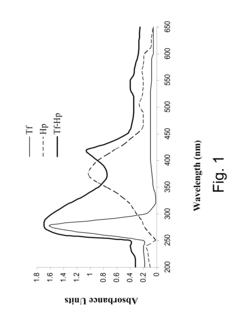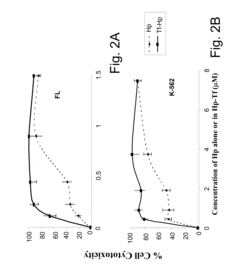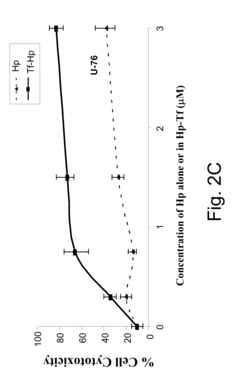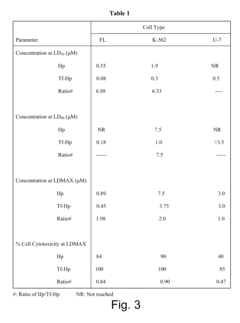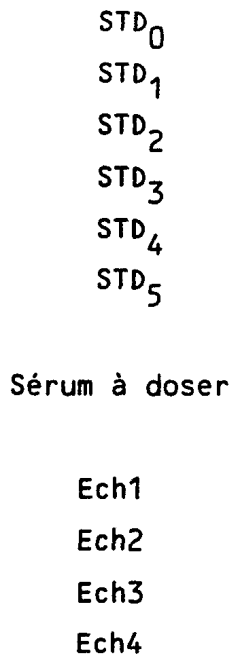Integrating Luminol with Advanced Spectroscopy Tools
AUG 19, 20259 MIN READ
Generate Your Research Report Instantly with AI Agent
Patsnap Eureka helps you evaluate technical feasibility & market potential.
Luminol-Spectroscopy Integration Background
Luminol, a chemiluminescent compound, has long been utilized in forensic science for blood detection. Its integration with advanced spectroscopy tools represents a significant leap forward in analytical capabilities. This fusion of technologies aims to enhance the sensitivity, specificity, and reliability of luminol-based detection methods, particularly in challenging forensic scenarios.
The journey of luminol in forensic applications dates back to the 1930s when its chemiluminescent properties were first discovered. Since then, it has become a staple in crime scene investigations, allowing investigators to detect trace amounts of blood that are invisible to the naked eye. However, traditional luminol techniques have limitations, including potential false positives and the inability to provide detailed chemical information about the detected substances.
The evolution of spectroscopic technologies, particularly in the fields of Raman spectroscopy, Fourier-transform infrared spectroscopy (FTIR), and mass spectrometry, has opened new avenues for enhancing luminol's capabilities. These advanced spectroscopy tools offer the potential to not only detect the presence of blood but also to analyze its composition, age, and even potentially identify individual characteristics.
The integration of luminol with spectroscopy addresses several key challenges in forensic science. It aims to improve the accuracy of blood detection by reducing false positives caused by other substances that may react with luminol. Additionally, this integration seeks to provide more detailed information about detected blood samples, potentially aiding in the reconstruction of crime scenes and the identification of suspects.
Recent technological advancements have made it possible to miniaturize spectroscopic instruments, making them more portable and suitable for on-site forensic investigations. This development aligns well with the need for rapid, non-destructive analysis in forensic settings, where preserving evidence integrity is paramount.
The convergence of luminol and advanced spectroscopy also has implications beyond forensic science. It holds promise in medical diagnostics, environmental monitoring, and industrial quality control, where the detection and analysis of trace substances are crucial. This broader applicability has driven increased research and development efforts in recent years.
As we explore the integration of luminol with advanced spectroscopy tools, it is essential to consider the technical challenges, potential benefits, and the impact on forensic practices and related fields. This technological synergy represents a significant step towards more comprehensive and reliable analytical methods in forensic science and beyond.
The journey of luminol in forensic applications dates back to the 1930s when its chemiluminescent properties were first discovered. Since then, it has become a staple in crime scene investigations, allowing investigators to detect trace amounts of blood that are invisible to the naked eye. However, traditional luminol techniques have limitations, including potential false positives and the inability to provide detailed chemical information about the detected substances.
The evolution of spectroscopic technologies, particularly in the fields of Raman spectroscopy, Fourier-transform infrared spectroscopy (FTIR), and mass spectrometry, has opened new avenues for enhancing luminol's capabilities. These advanced spectroscopy tools offer the potential to not only detect the presence of blood but also to analyze its composition, age, and even potentially identify individual characteristics.
The integration of luminol with spectroscopy addresses several key challenges in forensic science. It aims to improve the accuracy of blood detection by reducing false positives caused by other substances that may react with luminol. Additionally, this integration seeks to provide more detailed information about detected blood samples, potentially aiding in the reconstruction of crime scenes and the identification of suspects.
Recent technological advancements have made it possible to miniaturize spectroscopic instruments, making them more portable and suitable for on-site forensic investigations. This development aligns well with the need for rapid, non-destructive analysis in forensic settings, where preserving evidence integrity is paramount.
The convergence of luminol and advanced spectroscopy also has implications beyond forensic science. It holds promise in medical diagnostics, environmental monitoring, and industrial quality control, where the detection and analysis of trace substances are crucial. This broader applicability has driven increased research and development efforts in recent years.
As we explore the integration of luminol with advanced spectroscopy tools, it is essential to consider the technical challenges, potential benefits, and the impact on forensic practices and related fields. This technological synergy represents a significant step towards more comprehensive and reliable analytical methods in forensic science and beyond.
Market Demand Analysis
The integration of luminol with advanced spectroscopy tools represents a significant advancement in forensic science and analytical chemistry, driving substantial market demand across various sectors. This innovative combination enhances the sensitivity and specificity of luminol-based detection methods, opening up new possibilities for crime scene investigation, environmental monitoring, and biomedical research.
In the forensic science sector, there is a growing need for more accurate and reliable methods to detect trace amounts of blood and other biological evidence. The integration of luminol with advanced spectroscopy tools addresses this demand by providing a more robust and sensitive detection system. Law enforcement agencies and forensic laboratories worldwide are increasingly adopting these advanced technologies to improve the efficiency and accuracy of their investigations.
The environmental monitoring sector also shows significant interest in this integrated technology. The ability to detect and analyze minute quantities of organic compounds in water, soil, and air samples is crucial for assessing pollution levels and ensuring compliance with environmental regulations. The enhanced sensitivity offered by the combination of luminol and advanced spectroscopy tools enables more precise detection of contaminants, driving demand from environmental agencies, research institutions, and industrial organizations.
In the biomedical research field, the market demand for this integrated technology is rapidly expanding. The ability to detect and quantify specific biomolecules with high sensitivity is essential for various applications, including cancer research, drug discovery, and diagnostics. The integration of luminol with advanced spectroscopy tools provides researchers with a powerful tool for studying cellular processes and developing new therapeutic approaches.
The pharmaceutical industry is another key driver of market demand for this integrated technology. Drug development processes require highly sensitive analytical methods to detect and quantify drug compounds and their metabolites in biological samples. The enhanced detection capabilities offered by the luminol-spectroscopy integration are particularly valuable in pharmacokinetic studies and quality control processes.
Furthermore, the food and beverage industry is showing increasing interest in this technology for quality control and safety assurance. The ability to detect trace contaminants or adulterants in food products with high sensitivity is crucial for ensuring consumer safety and maintaining regulatory compliance.
As awareness of the benefits of this integrated technology grows, the market demand is expected to increase across various geographical regions. North America and Europe currently lead in adoption, driven by well-established forensic and research infrastructures. However, emerging economies in Asia-Pacific and Latin America are showing rapid growth in demand, particularly in the environmental monitoring and pharmaceutical sectors.
In the forensic science sector, there is a growing need for more accurate and reliable methods to detect trace amounts of blood and other biological evidence. The integration of luminol with advanced spectroscopy tools addresses this demand by providing a more robust and sensitive detection system. Law enforcement agencies and forensic laboratories worldwide are increasingly adopting these advanced technologies to improve the efficiency and accuracy of their investigations.
The environmental monitoring sector also shows significant interest in this integrated technology. The ability to detect and analyze minute quantities of organic compounds in water, soil, and air samples is crucial for assessing pollution levels and ensuring compliance with environmental regulations. The enhanced sensitivity offered by the combination of luminol and advanced spectroscopy tools enables more precise detection of contaminants, driving demand from environmental agencies, research institutions, and industrial organizations.
In the biomedical research field, the market demand for this integrated technology is rapidly expanding. The ability to detect and quantify specific biomolecules with high sensitivity is essential for various applications, including cancer research, drug discovery, and diagnostics. The integration of luminol with advanced spectroscopy tools provides researchers with a powerful tool for studying cellular processes and developing new therapeutic approaches.
The pharmaceutical industry is another key driver of market demand for this integrated technology. Drug development processes require highly sensitive analytical methods to detect and quantify drug compounds and their metabolites in biological samples. The enhanced detection capabilities offered by the luminol-spectroscopy integration are particularly valuable in pharmacokinetic studies and quality control processes.
Furthermore, the food and beverage industry is showing increasing interest in this technology for quality control and safety assurance. The ability to detect trace contaminants or adulterants in food products with high sensitivity is crucial for ensuring consumer safety and maintaining regulatory compliance.
As awareness of the benefits of this integrated technology grows, the market demand is expected to increase across various geographical regions. North America and Europe currently lead in adoption, driven by well-established forensic and research infrastructures. However, emerging economies in Asia-Pacific and Latin America are showing rapid growth in demand, particularly in the environmental monitoring and pharmaceutical sectors.
Current Challenges
The integration of luminol with advanced spectroscopy tools presents several significant challenges that researchers and developers must address. One of the primary obstacles is the sensitivity and specificity of luminol-based detection when combined with spectroscopic techniques. While luminol is known for its chemiluminescent properties, ensuring consistent and reliable signal generation across various spectroscopic platforms remains a complex task.
The optimization of reaction conditions poses another substantial challenge. Luminol's chemiluminescent reaction is highly dependent on factors such as pH, temperature, and the presence of catalysts. Integrating these variable conditions with the precise requirements of advanced spectroscopy tools demands careful calibration and control mechanisms, which can be difficult to achieve in diverse analytical environments.
Interference from background signals and matrix effects represents a significant hurdle in the integration process. Advanced spectroscopy tools often detect a wide range of molecular interactions, and distinguishing the luminol-generated signal from background noise or competing emissions from sample matrices can be particularly challenging. This issue is especially pronounced in complex biological or environmental samples where multiple fluorescent or luminescent species may be present.
The development of robust and versatile instrumentation capable of simultaneously handling luminol chemiluminescence and spectroscopic measurements is another key challenge. Current spectroscopy tools may not be optimized for the rapid and sensitive detection required in luminol-based assays, necessitating the design of new hybrid systems or significant modifications to existing equipment.
Data integration and interpretation present additional complexities. Combining the time-resolved data from luminol chemiluminescence with the spectral information from advanced spectroscopy tools requires sophisticated algorithms and data processing techniques. Developing software capable of real-time analysis and interpretation of these multidimensional datasets remains a significant technical challenge.
Standardization and reproducibility across different laboratories and experimental setups are also major concerns. The integration of luminol with spectroscopy tools must yield consistent results across various instruments and conditions to ensure widespread adoption and reliability in research and diagnostic applications.
Lastly, the cost and complexity of integrated systems pose barriers to widespread implementation. Advanced spectroscopy tools are often expensive and require specialized expertise to operate. Incorporating luminol-based detection without significantly increasing system complexity or cost is a challenge that needs to be addressed to make this integrated approach more accessible to a broader range of researchers and laboratories.
The optimization of reaction conditions poses another substantial challenge. Luminol's chemiluminescent reaction is highly dependent on factors such as pH, temperature, and the presence of catalysts. Integrating these variable conditions with the precise requirements of advanced spectroscopy tools demands careful calibration and control mechanisms, which can be difficult to achieve in diverse analytical environments.
Interference from background signals and matrix effects represents a significant hurdle in the integration process. Advanced spectroscopy tools often detect a wide range of molecular interactions, and distinguishing the luminol-generated signal from background noise or competing emissions from sample matrices can be particularly challenging. This issue is especially pronounced in complex biological or environmental samples where multiple fluorescent or luminescent species may be present.
The development of robust and versatile instrumentation capable of simultaneously handling luminol chemiluminescence and spectroscopic measurements is another key challenge. Current spectroscopy tools may not be optimized for the rapid and sensitive detection required in luminol-based assays, necessitating the design of new hybrid systems or significant modifications to existing equipment.
Data integration and interpretation present additional complexities. Combining the time-resolved data from luminol chemiluminescence with the spectral information from advanced spectroscopy tools requires sophisticated algorithms and data processing techniques. Developing software capable of real-time analysis and interpretation of these multidimensional datasets remains a significant technical challenge.
Standardization and reproducibility across different laboratories and experimental setups are also major concerns. The integration of luminol with spectroscopy tools must yield consistent results across various instruments and conditions to ensure widespread adoption and reliability in research and diagnostic applications.
Lastly, the cost and complexity of integrated systems pose barriers to widespread implementation. Advanced spectroscopy tools are often expensive and require specialized expertise to operate. Incorporating luminol-based detection without significantly increasing system complexity or cost is a challenge that needs to be addressed to make this integrated approach more accessible to a broader range of researchers and laboratories.
Existing Integration Solutions
01 Luminol in forensic applications
Luminol is widely used in forensic science for detecting trace amounts of blood at crime scenes. When luminol comes into contact with the iron in hemoglobin, it produces a blue chemiluminescence. This reaction is highly sensitive and can detect blood even after cleaning attempts. Forensic investigators use luminol-based solutions to spray surfaces and identify potential blood evidence that may not be visible to the naked eye.- Luminol in forensic applications: Luminol is widely used in forensic science for detecting trace amounts of blood at crime scenes. When mixed with an oxidizing agent, it produces a blue chemiluminescence in the presence of hemoglobin, allowing investigators to visualize blood traces that are otherwise invisible to the naked eye.
- Luminol-based detection systems: Various detection systems incorporate luminol for its chemiluminescent properties. These systems are used in environmental monitoring, food safety testing, and medical diagnostics. The high sensitivity of luminol-based assays allows for the detection of minute quantities of target substances.
- Luminol derivatives and modifications: Research focuses on developing luminol derivatives and modifications to enhance its performance or tailor its properties for specific applications. These modifications can improve sensitivity, stability, or specificity of luminol-based detection methods.
- Luminol in analytical chemistry: Luminol is extensively used in analytical chemistry for the quantitative and qualitative analysis of various substances. Its chemiluminescent reaction is employed in flow injection analysis, high-performance liquid chromatography, and other analytical techniques to detect and measure analytes with high sensitivity.
- Luminol in biomedical research: In biomedical research, luminol is used to study cellular processes, particularly those involving reactive oxygen species and oxidative stress. It serves as a tool for investigating immune cell function, monitoring enzyme activity, and assessing antioxidant capacity in biological systems.
02 Luminol in medical diagnostics
Luminol has applications in medical diagnostics, particularly in detecting and quantifying certain biological molecules. It can be used in immunoassays and other diagnostic tests to detect specific proteins or enzymes. The chemiluminescent properties of luminol allow for highly sensitive detection methods in medical laboratories, aiding in the diagnosis of various conditions and diseases.Expand Specific Solutions03 Luminol in environmental monitoring
Luminol-based systems are employed in environmental monitoring to detect pollutants and contaminants. These systems can be used to identify the presence of heavy metals, oxidizing agents, or other environmental toxins in water or soil samples. The high sensitivity of luminol reactions allows for the detection of very low concentrations of pollutants, making it valuable for environmental protection and quality control.Expand Specific Solutions04 Enhanced luminol formulations
Research has focused on developing enhanced luminol formulations to improve sensitivity, stability, and specificity. These advancements include the incorporation of catalysts, stabilizers, or other reagents to optimize the chemiluminescent reaction. Some formulations aim to reduce interference from other substances or extend the duration of the luminescent effect, improving the reliability and applicability of luminol-based detection methods.Expand Specific Solutions05 Luminol in analytical chemistry
Luminol is utilized in various analytical chemistry techniques, particularly in flow injection analysis and high-performance liquid chromatography. Its chemiluminescent properties allow for the detection and quantification of analytes in complex mixtures. These applications extend to pharmaceutical analysis, food safety testing, and industrial quality control, where luminol-based methods offer high sensitivity and selectivity.Expand Specific Solutions
Key Industry Players
The integration of Luminol with advanced spectroscopy tools represents an emerging field at the intersection of chemiluminescence and spectroscopic analysis. This technology is in its early development stage, with a growing market potential as researchers explore its applications in forensics, biomedical imaging, and environmental monitoring. The market size is expanding, driven by increasing demand for sensitive detection methods in various industries. Technologically, the field is rapidly evolving, with key players like Washington University in St. Louis, The Johns Hopkins University, and Sony Group Corp. leading research efforts. These institutions are advancing the integration of Luminol-based systems with cutting-edge spectroscopic techniques, pushing the boundaries of detection sensitivity and specificity.
Sony Group Corp.
Technical Solution: Sony has leveraged its expertise in imaging technology to create an integrated Luminol-spectroscopy system for biomedical applications. Their approach combines high-sensitivity CMOS image sensors with a microfluidic Luminol delivery system and a compact spectrometer[8]. The integration includes advanced image processing algorithms that can detect and analyze faint chemiluminescence signals in real-time[10]. Sony's system also incorporates machine learning techniques to improve signal-to-noise ratios and automatically identify spectral patterns associated with specific biomarkers[12].
Strengths: High-resolution imaging capabilities, real-time analysis, and potential for automated diagnostics. Weaknesses: May be limited to specific biomedical applications and require frequent calibration.
The Regents of the University of California
Technical Solution: The University of California has developed a novel approach to integrating Luminol with advanced spectroscopy tools, focusing on environmental monitoring applications. Their system combines a flow-injection analysis setup with a dual-emission spectrofluorometer, allowing for simultaneous detection of Luminol chemiluminescence and fluorescence from other compounds[13]. The integration includes a unique sample preconcentration step using molecularly imprinted polymers, which enhances sensitivity for specific target analytes[15]. UC researchers have also incorporated a multi-wavelength excitation source, enabling the system to differentiate between Luminol signals and potential interfering compounds in complex environmental samples[17].
Strengths: Versatility in environmental analysis, high selectivity, and ability to detect multiple analytes simultaneously. Weaknesses: May require complex sample preparation and have limitations in highly turbid samples.
Core Innovations
Photodynamic therapy using chemiluminescence and a ligand-photosensitiser conjugate
PatentInactiveUS20100297762A1
Innovation
- A method involving a ligand-toxin conjugate (LTC) comprising a photosensitizer like hematoporphyrin conjugated with transferrin, combined with a chemiluminescent agent such as luminol, which activates the photosensitizer intracellularly to produce reactive oxygen species, thereby enhancing target cell destruction without requiring external light.
Method of measuring luminescence in an assay by luminescence
PatentWO1992013264A1
Innovation
- The method employs a luminescent tracer compound and a luminescent reference compound that emit at different wavelengths when excited by the same wavelength, allowing for correction of luminescence measurements to account for the optical quality of the medium, thereby enhancing sensitivity and reproducibility without requiring complex equipment or special cuvettes.
Regulatory Considerations
The integration of luminol with advanced spectroscopy tools presents several regulatory considerations that must be carefully addressed. These considerations span across multiple domains, including laboratory safety, environmental protection, and quality control in forensic applications.
From a laboratory safety perspective, the use of luminol and associated chemicals requires adherence to strict handling and disposal protocols. Regulatory bodies such as the Occupational Safety and Health Administration (OSHA) in the United States mandate specific safety measures for working with potentially hazardous substances. This includes proper personal protective equipment (PPE), adequate ventilation systems, and established emergency procedures.
Environmental regulations also play a crucial role in the development and application of luminol-based spectroscopy techniques. The Environmental Protection Agency (EPA) and similar organizations worldwide set guidelines for the disposal of chemical waste and the prevention of environmental contamination. Researchers and practitioners must ensure that their methodologies comply with these regulations to minimize ecological impact.
In forensic applications, the integration of luminol with advanced spectroscopy tools must meet stringent quality control and chain of custody requirements. Regulatory bodies such as the International Organization for Standardization (ISO) provide frameworks for ensuring the reliability and reproducibility of forensic methods. Compliance with these standards is essential for the admissibility of evidence in legal proceedings.
Furthermore, the use of spectroscopic data in criminal investigations is subject to data protection and privacy regulations. Laws such as the General Data Protection Regulation (GDPR) in the European Union impose strict requirements on the collection, storage, and processing of personal data, which may include spectroscopic profiles linked to individuals.
Regulatory considerations also extend to the manufacturing and distribution of integrated luminol-spectroscopy systems. Agencies like the Food and Drug Administration (FDA) in the United States may have oversight on the production of such devices, particularly if they have potential medical applications. Compliance with Good Manufacturing Practices (GMP) and relevant quality management systems is crucial for market approval and commercialization.
As the technology evolves, regulatory frameworks may need to adapt to address novel applications and potential risks. Ongoing dialogue between researchers, industry stakeholders, and regulatory bodies is essential to ensure that regulations keep pace with technological advancements while maintaining public safety and scientific integrity.
From a laboratory safety perspective, the use of luminol and associated chemicals requires adherence to strict handling and disposal protocols. Regulatory bodies such as the Occupational Safety and Health Administration (OSHA) in the United States mandate specific safety measures for working with potentially hazardous substances. This includes proper personal protective equipment (PPE), adequate ventilation systems, and established emergency procedures.
Environmental regulations also play a crucial role in the development and application of luminol-based spectroscopy techniques. The Environmental Protection Agency (EPA) and similar organizations worldwide set guidelines for the disposal of chemical waste and the prevention of environmental contamination. Researchers and practitioners must ensure that their methodologies comply with these regulations to minimize ecological impact.
In forensic applications, the integration of luminol with advanced spectroscopy tools must meet stringent quality control and chain of custody requirements. Regulatory bodies such as the International Organization for Standardization (ISO) provide frameworks for ensuring the reliability and reproducibility of forensic methods. Compliance with these standards is essential for the admissibility of evidence in legal proceedings.
Furthermore, the use of spectroscopic data in criminal investigations is subject to data protection and privacy regulations. Laws such as the General Data Protection Regulation (GDPR) in the European Union impose strict requirements on the collection, storage, and processing of personal data, which may include spectroscopic profiles linked to individuals.
Regulatory considerations also extend to the manufacturing and distribution of integrated luminol-spectroscopy systems. Agencies like the Food and Drug Administration (FDA) in the United States may have oversight on the production of such devices, particularly if they have potential medical applications. Compliance with Good Manufacturing Practices (GMP) and relevant quality management systems is crucial for market approval and commercialization.
As the technology evolves, regulatory frameworks may need to adapt to address novel applications and potential risks. Ongoing dialogue between researchers, industry stakeholders, and regulatory bodies is essential to ensure that regulations keep pace with technological advancements while maintaining public safety and scientific integrity.
Environmental Impact Assessment
The integration of luminol with advanced spectroscopy tools presents both opportunities and challenges in terms of environmental impact. This innovative approach to forensic analysis and chemical detection has the potential to significantly enhance our ability to identify and quantify trace amounts of substances in various environmental matrices. However, it also raises important considerations regarding its ecological footprint and potential unintended consequences.
One of the primary environmental benefits of this integrated technology is its increased sensitivity and specificity in detecting pollutants and contaminants. By combining the chemiluminescent properties of luminol with the analytical power of advanced spectroscopy, researchers and environmental monitoring agencies can identify a wider range of substances at lower concentrations. This capability is particularly valuable in assessing water quality, soil contamination, and air pollution levels, potentially leading to earlier detection of environmental threats and more effective remediation efforts.
The use of luminol in conjunction with spectroscopic techniques may also reduce the need for more environmentally harmful chemical reagents traditionally used in analytical processes. This could result in a decrease in the production and disposal of toxic substances associated with conventional laboratory procedures. Additionally, the enhanced efficiency of this integrated approach may lead to reduced energy consumption in analytical processes, contributing to a smaller carbon footprint for environmental testing laboratories.
However, the environmental impact of producing and disposing of luminol and related compounds must be carefully considered. While luminol itself is generally considered non-toxic, its synthesis and the manufacturing of specialized spectroscopic equipment may involve the use of hazardous materials or energy-intensive processes. A comprehensive life cycle assessment of this integrated technology would be necessary to fully understand its net environmental impact.
Another potential concern is the release of luminol and its reaction products into the environment during field applications. Although the quantities used are typically small, the cumulative effect of widespread adoption of this technology on ecosystems and wildlife should be studied. This is particularly important in aquatic environments, where the chemiluminescent reactions might interfere with bioluminescent organisms or alter local chemical balances.
The integration of luminol with advanced spectroscopy tools also has implications for environmental policy and regulation. As detection limits become lower and the range of detectable substances expands, it may necessitate updates to environmental quality standards and monitoring protocols. This could lead to more stringent environmental regulations, potentially benefiting ecosystem health but also placing new burdens on industries and municipalities.
In conclusion, while the integration of luminol with advanced spectroscopy tools offers promising advancements in environmental monitoring and forensic analysis, a balanced approach to its implementation is crucial. Ongoing research into its long-term ecological effects, coupled with responsible use and disposal practices, will be essential to maximize its benefits while minimizing potential negative impacts on the environment.
One of the primary environmental benefits of this integrated technology is its increased sensitivity and specificity in detecting pollutants and contaminants. By combining the chemiluminescent properties of luminol with the analytical power of advanced spectroscopy, researchers and environmental monitoring agencies can identify a wider range of substances at lower concentrations. This capability is particularly valuable in assessing water quality, soil contamination, and air pollution levels, potentially leading to earlier detection of environmental threats and more effective remediation efforts.
The use of luminol in conjunction with spectroscopic techniques may also reduce the need for more environmentally harmful chemical reagents traditionally used in analytical processes. This could result in a decrease in the production and disposal of toxic substances associated with conventional laboratory procedures. Additionally, the enhanced efficiency of this integrated approach may lead to reduced energy consumption in analytical processes, contributing to a smaller carbon footprint for environmental testing laboratories.
However, the environmental impact of producing and disposing of luminol and related compounds must be carefully considered. While luminol itself is generally considered non-toxic, its synthesis and the manufacturing of specialized spectroscopic equipment may involve the use of hazardous materials or energy-intensive processes. A comprehensive life cycle assessment of this integrated technology would be necessary to fully understand its net environmental impact.
Another potential concern is the release of luminol and its reaction products into the environment during field applications. Although the quantities used are typically small, the cumulative effect of widespread adoption of this technology on ecosystems and wildlife should be studied. This is particularly important in aquatic environments, where the chemiluminescent reactions might interfere with bioluminescent organisms or alter local chemical balances.
The integration of luminol with advanced spectroscopy tools also has implications for environmental policy and regulation. As detection limits become lower and the range of detectable substances expands, it may necessitate updates to environmental quality standards and monitoring protocols. This could lead to more stringent environmental regulations, potentially benefiting ecosystem health but also placing new burdens on industries and municipalities.
In conclusion, while the integration of luminol with advanced spectroscopy tools offers promising advancements in environmental monitoring and forensic analysis, a balanced approach to its implementation is crucial. Ongoing research into its long-term ecological effects, coupled with responsible use and disposal practices, will be essential to maximize its benefits while minimizing potential negative impacts on the environment.
Unlock deeper insights with Patsnap Eureka Quick Research — get a full tech report to explore trends and direct your research. Try now!
Generate Your Research Report Instantly with AI Agent
Supercharge your innovation with Patsnap Eureka AI Agent Platform!
